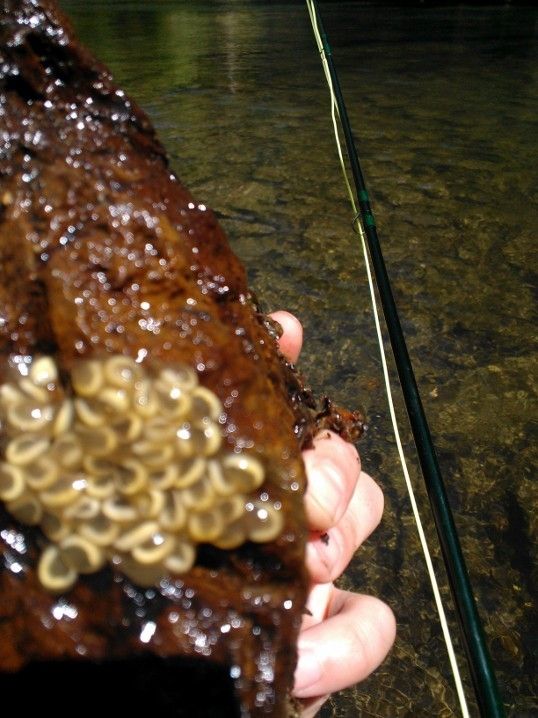You wouldn't see legs in salamander larva. They have legless tadpoles like a frog does. They tend to be longer and skinnier than frog tadpoles. More like minnows, not the "sphere with a tail".
I'm certainly not sure, it's just my guess. They look like amphibian eggs to me.
The trouble with the salamander angle is where they were found. This looks like a midstream rock with some current. Most salamanders lay their eggs in vernal pools, tiny spring seeps, or, at the very least, nearly current-less backwaters. Also you are narrowed by season. Most salamanders breed in late summer/fall. Some lay eggs shortly thereafter, while others keep the eggs internal overwinter and then lay in the spring.
I still like the idea of mudpuppies, as they do lay midstream in current like that, attached to the bottom of rocks just like that, and the eggs look to be of appropriate size. The timing is also perfect for the ones I have seen. I have seen many mudpuppy egg masses, they are downright common in places (NW PA). And they look just like that. I was confident until I found out the drainage. Supposedly, no mudpuppies in the drainage.
Hellbender eggs actually look similar, and there are hellbenders there. But they lay and hatch in the fall. Further, their lairs are typically much larger, it's not just a little ledge under a rock, it's like a freakin cave. And it'd be unusual to approach an egg bearing lair in daytime without seeing the guardian.
There are a lot of varieties of smaller salamanders and I'm not familiar with all of their egg laying habits. As I said, vernal pools, spring seeps, etc. are more common.



